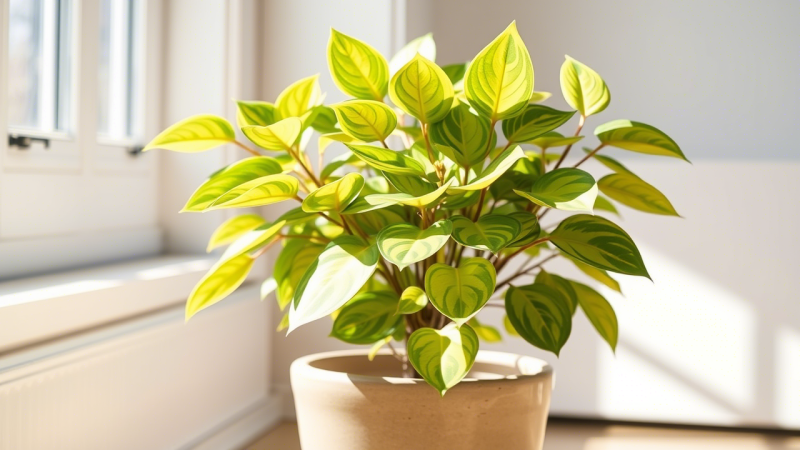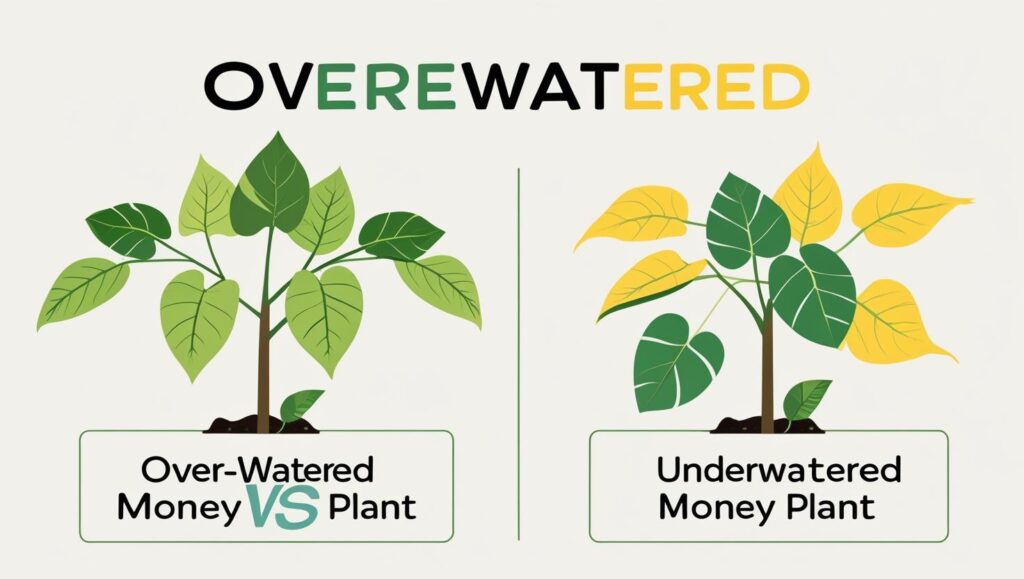For plant owners worldwide, the resilient money plant (Epipremnum aureum) is a household staple, yet a fundamental question persists: how often should you water a money plant? Horticultural experts largely agree that the answer is not found in a rigid schedule, but in careful observation of the soil and the plant itself. Adhering to a fixed weekly routine is a common path to an unhealthy plant, often leading to root rot from overwatering.

This guide provides a detailed framework based on advice from botanical institutions and horticultural science to help maintain the health and vigor of this popular indoor plant, often referred to as Pothos.
Watering Your Money Plant
| Key Principle | Detail |
| Check Soil First | The most reliable method is to check the top 1-2 inches of soil. If it is dry to the touch, it is time to water. |
| Avoid a Fixed Schedule | Watering frequency changes with seasons, light, and indoor climate. A set schedule risks over- or under-watering. |
| Water Thoroughly | When you do water, drench the soil until water drains from the bottom holes. Discard any excess water from the saucer. |
| Know the Danger Signs | Yellowing leaves and soft, black stems are classic signs of overwatering a money plant, which is more dangerous than underwatering. |
The Golden Rule: Water When the Soil Is Dry
The single most critical factor in money plant care is soil moisture. Most experts, including those at the University of Maryland Extension, advocate for the “soak and dry” method. This technique involves waiting until the top layer of soil has dried out before watering again.
To determine this, an owner should insert their finger 1 to 2 inches into the soil. If the soil feels dry at that depth, it is an appropriate time to water. If moisture is still present, it is best to wait a few more days and check again. “Pothos are very tolerant of dry soil, but are susceptible to root rot if the soil is kept too wet,” states a guide from the Clemson Cooperative Extension, reinforcing that erring on the side of dryness is safer.
When watering is necessary, the plant should be irrigated thoroughly. Water should be applied evenly to the soil surface until it begins to flow freely from the drainage holes at the bottom of the pot. This ensures the entire root system has access to moisture. After a few minutes, any standing water in the saucer or tray beneath the pot should be discarded to prevent the roots from sitting in water, a primary cause of root rot.
How Environmental Factors Influence Watering Frequency
A plant’s need for water is not static. Several environmental variables directly impact how often you should water a money plant. Understanding these factors is key to moving away from a one-size-fits-all schedule.
Light Exposure
Light is a primary driver of photosynthesis and growth, which in turn dictates water consumption. A money plant situated in a bright, indirect light location will grow more actively and use water more quickly than one in a low-light corner. A plant in a sunnier spot may need watering every 7-10 days, while the same plant in a darker area might only need water every 2-3 weeks.
Temperature and Humidity
Warmer and less humid environments, typical of heated homes in winter, cause moisture to evaporate from the soil and transpire from the leaves more rapidly. According to the Missouri Botanical Garden, Pothos thrives in temperatures between 60-85°F (15−29°C) and appreciates higher humidity. In dry conditions, more frequent watering will be necessary. Conversely, in a cooler, more humid setting, the soil will retain moisture longer.

Potting Container and Soil Mix
The type of pot and potting soil play a crucial role. Porous materials like terracotta or unglazed ceramic allow water to evaporate through their walls, causing the soil to dry out faster. Non-porous containers, such as plastic or glazed ceramic, hold moisture for longer.
Furthermore, a well-draining potting mix is essential. Standard potting soils amended with perlite or pumice improve aeration and prevent waterlogging. A dense, compacted soil will retain too much water, creating an environment ripe for fungal diseases and root decay.
Identifying Signs of Distress: Thirsty or Drowning?
The plant itself provides clear visual cues about its watering needs. Recognizing these signals can help prevent long-term damage.
Symptoms of an Underwatered Plant
An underwatered money plant will begin to wilt. Its leaves will look limp, droopy, and may start to curl inward. The soil will be visibly dry and may pull away from the sides of the pot. Generally, the plant will quickly recover within hours of receiving a thorough watering.
Dangers of an Overwatering a Money Plant
Overwatering a money plant is a far more severe problem and the most common reason these hardy plants fail. When the soil is perpetually saturated, the roots are deprived of oxygen and begin to rot.
Key symptoms include:
- Yellowing Leaves: This is often one of the first and most noticeable signs.
- Soft, Black Stems: The base of the stems may become mushy and turn black or dark brown.
- Wilting: Paradoxically, an overwatered plant can also wilt. This occurs because the decaying roots can no longer absorb water, leading to a drooping appearance despite the wet soil.
If root rot is suspected, the plant should be removed from its pot to inspect the roots. Healthy roots are firm and white or light-colored, while rotted roots are brown, soft, and may have a foul odor. Trimming away the affected roots and repotting in fresh, dry potting soil is the only way to potentially save the plant.
As seasons change, so should watering habits. During the active growing seasons of spring and summer, a money plant will require more frequent watering. In the fall and winter, when light levels are lower and growth slows, its water needs decrease significantly. It is crucial to extend the period between waterings during these dormant months.
How Advanced Gardening Techniques Are Transforming Home Horticulture
